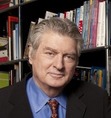Alan M. Siegel's Blog, page 4
April 6, 2025
Welcome to the golden age of brand voice—powered by AI
Before Artificial Intelligence (AI), getting brand voice right usually went wrong—too many moving parts, not enough resources, never enough time.
Marketers knew exactly how their brand should sound—clear, compelling, unmistakably authentic. But in the daily deluge of deadlines, meetings and never-ending to-do lists, execution fell apart. Brand voice got diluted, misinterpreted or lost in the shuffle altogether.
Today, marketing is a nonstop juggling act—strategy, data, content, social media, email, creative direction—all before lunch. And let’s be real: not every marketer is a natural writer. Yet, they’re expected to produce more content, faster and across more platforms than ever.
The result? Brand voice takes a backseat or disappears altogether.
But now, for the first time, AI is revolutionizing the game—transforming brand voice from an afterthought into a competitive advantage. At last, brands can finally lock in their voice with precision, speed and consistency like never before.
Brand voice, once exclusive, is now for everyoneFor decades, only the biggest brands had the time and resources to craft and protect a strong, consistent voice. Everyone else? Scrambling to keep up.
Not anymore.
AI-powered writing tools like Jasper, Grammarly and Writer.ai are leveling the playing field. No longer just glorified spellcheckers, these platforms are turning everyday marketers into brand voice superheroes.
And the numbers tell the story:
$1.7 billion. That’s what the AI writing assistant market was worth in 2023. By 2032? $12.3 billion.Grammarly: The tool is used by 50,000 organizations and 40 million people.Jasper: A powerhouse with 100,000 users.Writer.ai: Tripled its revenue and expanded to 250 companies, including big-name adopters like Salesforce, Accenture, Uber, Prudential, MARS and L’Oréal.75% of AI writing tools are cloud-based. Meaning? They’re always learning, evolving, and improving.Instant adjustments. No more waiting six months for a tone refresh—what gets fine-tuned today can be in-market tomorrow.Brand voice isn’t a rigid rulebook anymore. It’s agile, adaptable and finally within reach for every brand.
AI isn’t replacing creativity—it’s unlocking itThe biggest myth? AI will make everything sound the same.
The reality? AI is freeing brands to be sharper, bolder, and more distinct than ever.
Marketers and agencies no longer have to police brand voice. Instead, they can push creative boundaries—refining strategy, experimenting with nuance, and crafting voices that don’t just sound on-brand but unmistakably their own.
This isn’t just about efficiency—it’s a creative breakthrough.
AI Won’t Replace Brand Voice—It Will Perfect ItHere’s the truth: AI is only as powerful as the humans who train it.
The best brands won’t just use AI—they’ll shape it. They’ll refine their inputs, test variations, and push AI to create content that’s not just correct but compelling.
The future of brand voice won’t belong to those who resist AI. It will belong to those who master it.
A new era for marketersSmall brands will sound as polished as the biggest players. No more uneven tone or scattered messaging.Marketers can focus on storytelling, not grunt work. AI handles the consistency—humans bring the soul.Voice agility is now possible. Need a shift in tone for a new campaign? Adjustments happen instantly, not over months.Agencies will build even better brand voice frameworks. With AI handling execution, the real work will be in strategy and voice innovation.The future of brand voice starts hereBrand voice is no longer an elite, slow-moving discipline. For the first time, it’s living, evolving, and accessible to everyone.
AI isn’t just making brand voice easier to maintain—it’s making it stronger, more dynamic, and more intentional.
The brands that embrace AI won’t just sound polished; they’ll sound alive.
They’ll adapt instantly to shifts in culture, trends and audience preferences.
They’ll experiment with bold new tones, fine-tuning their voice faster than ever.
They’ll scale their storytelling—without losing what makes them unique.
As a pioneer of brand voice, Siegel+Gale is driving the next evolution. By combining decades of expertise with the latest AI tools, we create foundational brand voices built to evolve. Our approach isn’t just about consistency—it’s about scalable tools that make brands more engaging, relevant, and ready for the future.
Brands that hesitate? They’ll be stuck in the past, scrambling to keep up while competitors build voices that demand attention.
Brands that lean in?
They won’t just be heard—they’ll be unforgettable.
And in a world drowning in content, unforgettable is the only option.
Pat Attenasio is Director of Brand Communication at Siegel+Gale.
The post Welcome to the golden age of brand voice—powered by AI appeared first on Siegel+Gale.
April 1, 2025
The Subtext interview: Pat Attenasio
This interview originally appeared on The Subtext.
For our Director of Brand Communication, Pat Attenasio, simplicity isn’t a given—it’s an art that demands hard work, but leads to copy that lands and collaboration that flows naturally.
Where’s your hometown and where do you live currently?
Four years ago, my son and I put down roots in Madison, New Jersey—a town so quaint it might as well be Mayberry. Funny enough, I grew up just ten miles away and never even knew it was here. I’ve lived all over—DC, the Bay Area, Austin, Brooklyn, the Upper East Side—but Madison just feels like home. We’re tight with our neighbors, walk to school and the downtown shops, and can hop on a train to the city every hour. I love that my son gets to grow up so close to New York, experiencing some of the same things I did at his age.
In a few sentences, describe what you do.
I help brands tell stories that stick, stand out, and spark action.
What are the skills that make the biggest difference in your work?
Client empathy. They come to us at a crossroads, facing big, often overwhelming change. I start with the end in mind—who will be using what we create? At Siegel+Gale, our job isn’t just to build tools; it’s to guide them through the uncertainty with clarity and confidence.
If you could pick one piece of work to represent yourself, what would it be?
I’ll go with our recent voice work for a global healthcare tech leader. They do staggering good in the world but never really owned it—too humble, too functional. We stripped their voice down to two core attributes: Caring and Courageous. Alone, one’s too soft, the other too bold. Blended, they hit that rare sweet spot—empathetic but unwavering.
What is a campaign that you wish you had worked on?
Patagonia’s Black Friday campaign. Or anything Patagonia. They say it, they do it, they own it. No hedging, no half-assed values. Just bold moves and a loud, clear stance. That’s how it’s done.
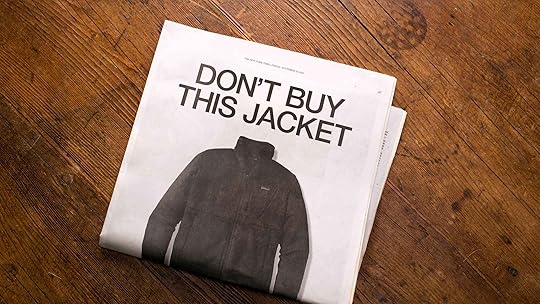
What is your favorite and least favorite brand right now? Why?
Favorite: Liquid Death. Most water brands try to be for everyone. Liquid Death actively leans into being polarizing. If you don’t get the joke, they’re fine with that—it’s part of the exclusivity. It’s not just water—it’s an attitude, a lifestyle, and a masterclass in branding that refuses to be boring.
Least favorite? Tupperware. And it pains me to say that— I worked on their brand a decade ago, and I still drink the Kool-Aid—because they really are that special. Their story, their heritage—it’s powerful. But with sales down, now’s the time to go bold. Instead, their rebrand plays it safe, focusing on product over impact. They’re an iconic American brand, and I want to see them soar. But they keep watering themselves down when they should be making a statement.
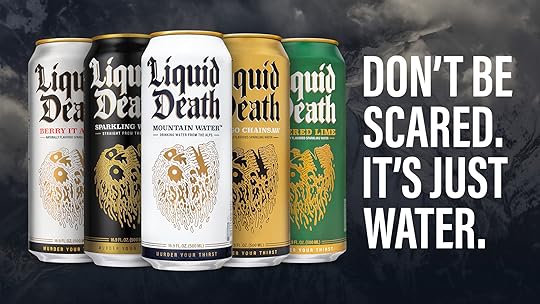
What’s a piece of feedback that still haunts you?
“We need to run this copy by our lawyers.”
What’s a piece of advice that still guides you?
Early in my career, I crushed my part of a client presentation—then checked out, riding the high. But my mentor, the brilliant Enshalla Anderson, pulled me aside—not to praise me, but to teach me. “Everyone in the room takes notes,” she said. That lesson stuck. Stay humble. Keep digging.
We can’t help but notice – you’re a pretty proud papa. How has being a parent enriched your creative life?
Every day, my son Teddy reminds me that creativity and simplicity should flow naturally—not be forced. Kids live fully in the present—no dwelling on the past, no stressing over the future. They demand you show up, right now.
I’ve also realized that complexity is man-made. Kids like Teddy don’t do jargon, and they’ll call you out with a confused look if you overcomplicate things. Our minds crave clear, simple language—something we forget as adults. So, I’m constantly revising how I think and speak to communicate better with my son. Simplicity is a child’s first language. It should be ours too.
What’s one major takeaway you’ve gained from each studio you have worked for in your career so far?
Each agency approaches branding differently. Along the way, I learned how to future-proof brands and bring them to life with real humanity. I’m a mix of every agency I’ve worked at and every great mind I’ve learned from—especially here at Siegel+Gale. This place has always been a talent factory.
Can you tell us about your path returning to Siegel+Gale after leaving for several years?
Siegel+Gale has been a huge part of my life for 17 years. It’s where I started my branding career, met my late wife, built lifelong friendships, and learned at the feet of legends. So, when our CEO, Howard Belk, invited me back, I didn’t hesitate. Now, I get to honor my wife’s legacy while building my own. I get to share what I’ve learned with the next generation of simplifiers and be part of a team shaping the future of communications, where simplicity meets AI. Coming back to Siegel+Gale feels right—this is home.
How does your background studying English and passion for literature inspire your work?
I was all about 20th-century short story writers in college, and Hemingway and Carver hooked me fast. I still remember reading Where I’m Calling From freshman year—it completely rewired how I think and write. The brevity, the clarity, the sharp, no-nonsense syntax—Hemingway’s five rules of writing are practically the foundation of simplicity. And science backs it up—our research and recent neuroscience studies show that this kind of language hits hardest, lighting up the brain’s reward centers. Just like it hooked me, I now preach its power to clients and colleagues alike.
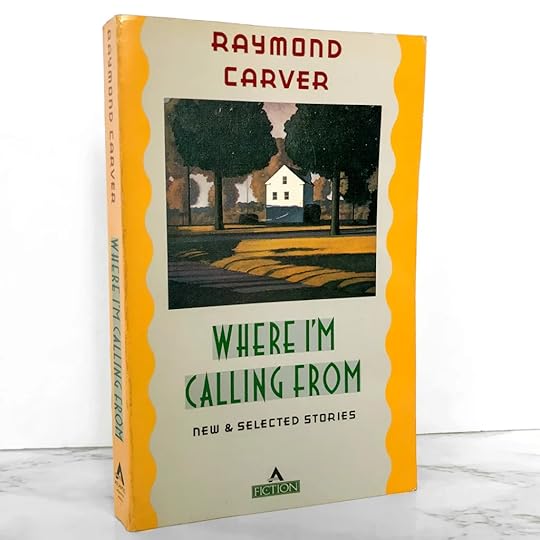
How does your philosophy of simplicity shape your work and creative process?
Simplicity takes work—messy, frustrating, often thankless. But the impact? Undeniable. As Bill Birchard says in Writing for Impact, “If you champion one habit to win readers, it has to be simplicity.” I’ve torn down and rebuilt my writing from the ground up because of it. The result? Tighter, sharper, stronger writing—more impact with fewer words.
What is one thing you wish you could tell every client?
Be bold. Too many brands play it safe and fade into the wallpaper. Clients start with big ambitions, but boldness gets chipped away by committees and compromise. In today’s world, brands need to be simple and bold to stand out. So, stick with it—see it through.
Do you have rituals for finding inspiration, or do you let it come naturally? And what’s your favorite offline source of inspiration?
Walking. A quick 20-minute stroll—around the office, through town—clears my head and resets my creativity. With so much time spent on a screen, I need to unplug, hit the pavement, and just move.
What’s your favorite way to procrastinate?
Right now, I’m deep down the tattoo portfolio rabbit hole. My arms are covered with tattoos symbolizing different chapters of my life, and I’m about to add another—a soaring eagle to represent what’s next.
What about the industry do you wish you knew starting out in your career?
Be real. Bring your whole self—this job demands it. Brains, persistence, guts. Early on, I
tried to fit in. Siegel+Gale encourages the opposite—and I thrive on it.
Where can The Subtext readers keep up with you? (blog, social channels, LinkedIn, website, etc)
Personal blog (coming soon!): hey.dad
Bonus Round
What do you listen to while working?
I focus best with either silence or classical music. When I’m working on a new brand voice, I make a playlist to set the vibe and help get in character. Right now, I’m building a voice that oozes swagger, so I’m listening to artists like Run-D.M.C., Iggy Pop, Missy Elliott, Joan Jett, early Elvis, Kendrick Lamar, and Doechii.
What’s your most creatively inspired time of day?
My commute—seriously. It’s the only time I truly have to myself. The train ride feels like a “This Is Your Life” episode, passing the hospital where I was born, Rutgers Newark, where my dad—our family’s first college grad—studied, and finally rolling into New York, my longtime home and my son’s birthplace. In under an hour, I get a moving montage of my life, with memories bubbling up at every stop.
What’s one writing rule you love to break, and one you never do?
One of my favorite rules: Write fast, edit slow. Most people (including me, once) do the opposite—but that kills flow. One rule I love to break? Save your work. Years ago, I trained myself out of agonizing over every word. When I catch myself over-polishing, I go all in—perfecting every detail—then delete it. Gone. I take a walk, come back, and rewrite it from memory in ten minutes. The result? Looser, sharper, more alive writing.
If you could ban one copy line/phrase, what would it be?
Human—the ultimate buzzword. Overused, vague, and often just a fancy way of saying… people.
Do you have a personal mantra?
Get shit done.
If you weren’t in this industry, what would you be doing?
I’d be a grief counselor. The grief community has been a lifeline for my son and me. These are some of the strongest, most resilient people out there, yet they’re often unseen or ignored by society. I want to change that.
Describe your creative process in three words.
Damn the torpedoes.
Pat Attenasio is Director of Brand Communication at
Siegel+Gale
.
The post The Subtext interview: Pat Attenasio appeared first on Siegel+Gale.
Connect and protect: how to create effective masterbrand strategies
This article originally appeared in Transform Magazine.
In 2015, the Volkswagen Group was the centre of a scandal related to vehicle emissions transparency. It suffered reputational and fiscal damage as a result. But, it managed to contain the impact to the VW consumer brand, sparing in the process other brands within the group like Bentley, Skoda and Porsche.
A portfolio of brands requires a deft handling in crisis situations. But for companies that set up effective masterbrand strategies that allow for enough flex within the family and strong emotional ties with target audiences, both parent and sub-brands will succeed.
Crisis comms
When crisis hits, as it did for VW, there is a risk of a sub-brand damaging the parent and sibling brands. Similarly, if the masterbrand undergoes a crisis, it may affect the sub-brands. “This is one of the risks of a purely branded house approach,” says brand consultancy Siegel+Gale’s west coast managing director, Katie Conway. “If everything is connected, a crisis in one area can impact perceptions overall. But many companies see the benefits of a branded house approach – for example, efficient impact and accelerated growth – as outweighing the potential risks.”
In 2023, Bud Light was the subject to a widespread US boycott because of a collaboration with a transgender influencer. There was nearly a 30% dip in sales in the months following, according to the Harvard Business Review, without the swift recovery generally noticed after boycotts of the like.
But, CEO of AB InBev, Bud Light’s parent brand, said in an earnings call in February 2024 that Bud Light stablemate Michelob Ultra wound up gaining shelf space and growing sales as a result. The impact of the boycott was limited to Bud Light itself, it didn’t reach the parent company or sibling brands. In fact, a sibling brand managed to gain ground as a result.
Andy Lipscombe is the director of brand strategy at FreshBritain, a consultancy that specialises in portfolio brand consultancy. He says that crises can be mitigated when there is a family of brands by building strong connections with each brand’s individual audiences. This was why Volkswagen was able to maintain the reputations of its brands unaffected by the emissions scandal. “I think what they do is they defer the connection with the consumer – the reputation – with each brand, rather than the group themselves. So when they had their emissions scandal, they were able to compartmentalize that.”

Masterbrand strategy
Getting the masterbrand strategy right relies on understanding the audience of each brand and building a strategy to meet their needs.
This is what tech giants have done well in recent years. Alphabet’s creation as the parent brand of Google in 2015 or Facebook’s introduction of Meta in 2021 were examples of companies wanting to expand their propositions without diluting their consumer brands or their connections with users, says Will Biondi, strategy director of DeSantis Breindel.
But, he adds that B2B companies often create families of brands in the same manner, but for slightly different reasons. There may be regulatory requirements that demand the development of different corporate entities or it might be a way to simplify a convoluted brand architecture in a company that has grown through acquisition. He says, “[Masterbrand development] just makes sense to sort of strive towards building equity in brands, but to take a really diligent approach to protect against risk, whether that’s legal or regulatory. It can also be used to introduce capabilities in a different sort of product set.”
Conway agrees, pointing to Microsoft as a good example.
“Many years ago, Microsoft intentionally kept the Xbox brand separate from the corporate brand as they were worried about the conservative, stodgy image of Microsoft negatively impacting perceptions of Xbox. Additionally, the brand targeted a niche audience, and having a distinct sub-brand allowed them to create a compelling personality and value proposition aligned with gamers. Later, as Microsoft sought to increase its relevance, it created a stronger connection to Xbox while leaving room for distinction. For example, the logo now shares visual language with other key Microsoft brands, and Microsoft appears in the website header.”
Microsoft has kept some sub-brands at arm’s length while integrating others quite firmly within the family. Its parent brand is strong worldwide, but Xbox had its own distinctive audience groups to focus on. Lipscombe says masterbrand strategy relies on “looking to find a unique emotional brand meaning that best embraces product architecture or consumer reach.”
Building connections is the priority.
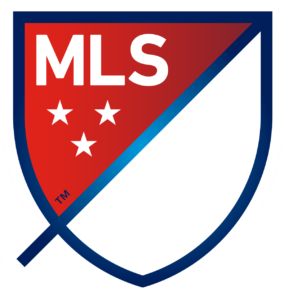
Major League Soccer (MLS), one of the fastest growing sports leagues in the world, has a unified league brand as well as individual club brands that are joined by a common set of guidelines. The MLS is a family of brands with the masterbrand working seamlessly in tandem with the club identities across broadcast and physical touchpoints. Each club has its own personality, but shares core visual guidelines – like the use of an individual club shield as a primary icon.
Amanda Kicera, vice president of club marketing at Major League Soccer, says, “With the eyes of the world on our sport and on Major League Soccer over these next few years, we have a tremendous opportunity to not only drive more awareness and inspire new fans of MLS, but to also enhance engagement amongst existing fans. While we do encourage clubs to follow certain brand-building principles and processes, we always support our clubs in their efforts to build their own distinctive identities and encourage them to tell their stories the way they feel is right. They know their local markets and fanbases best, and we trust their teams to advise us on what we can do that will resonate in their markets too.”
Natasha Murray, chief client officer at media agency UM argues that audience understanding is the key to masterbrand strategy. She says, “In recent years we’ve seen lots of alcohol brands looking to expand from their core audience. Common sense variants like low and no alcohol are a ‘safe’ option, but some spin-offs – introducing different flavours for new audiences for instance – can be a riskier proposition. While growth is key, no-one wants to risk tearing down decades-worth of brand equity. The simple answer is, once again, market research.”
Whether it’s a masterbrand that is tightly unified and interlinked, or one loosely assembled, all of the brands in the portfolio have to put the audience first in order to succeed. That strategy transcends B2B and B2C categories; it applies to every family of brands.
Murray says, “The masterbrand should represent what your audiences care most about, and consequently it acts as a core differentiator to what competitors offer – and this should extend across the brand set.”
Lipscombe breaks it down further and describes either a ‘branded house,’ in which “there’s a shared emotional meaning across all of their sub-brands,” or a house of brands where “there might be a silent group owner, and then there’s not a huge amount of visibility or knowledge around these brands being part of the same company.”
Putting the audience first
However it is structured though, the parent brand and sub-brands will have distinct audiences to reach and build connections with. Lipscombe says those within a house of brands might have more freedom to flex and express themselves individually, but those within a branded house will benefit from the strength of the masterbrand’s emotional resonance.
Kicera says, “It’s difficult to call out one specific example, but to give it a more holistic look, we have fans at every stage of the funnel and at the end of the day our collective goal is to grow our league. While we at the league level have a role at each stage of the funnel, when it comes to collaborating with our clubs we feel we are best suited to support and complement at the top, driving awareness and passing warm leads along to them to nurture. We are incredibly proud of the continued work from our club marketing teams to grow their fanbases and brands as we believe we have some of the greatest fan environments and traditions in all of sports. The continued growth and momentum of our league is a testament to their talent and dedication, and we can’t wait to see all the great work that will be accomplished throughout 2025.”
For an investment audience, manoeuvring the brand at key moments, like IPOs or M&As may yield excellent results. Biondi says companies that create masterbrands or sub-brands at these key moments can see them “act as a multiple on your valuation. If you’re able to present a really strong, interesting brand and show the market that you have a really deliberate story and vision in mind, it can pay off in terms of how you’re valued.”
When speaking to customers, masterbrands can provide a sense of familiarity and trust. Conway says, “Endorsements can help instil trust in a new brand, and they can also signal a type of experience a customer can expect. Think of the Virgin family of brands – whether Virgin Atlantic, Virgin Hotels or Virgin Media – the presence of the Virgin brand sets the expectation for a customer-centric experience with a playful spirit.”
The business audience might require a different approach too, with subtle, but clear points of differentiation between the sub-brands within a portfolio. These individual brands can build connections with different types of clients, while quietly relying on the authoritative support of the masterbrand.
Creating those connections relies on building a strategy that takes into consideration the needs of each audience group. Lipscombe says FreshBritain does this by breaking down a company’s architecture and creating an archetype for each sub-brand and then crafting a brand that will be able to connect emotionally with each audience based on that archetype.
That’s what Volkswagen Group did right all those years ago. Its individual sub-brands made strong connections with customers that the emissions scandal could scarcely damage. But the auto industry might be due for rocky roads in the future too. Jaguar Land Rover introduced a house of brands strategy in March 2024 that will spin off Defender and Discovery into their own separate sub-brands outside of the Land Rover umbrella.
“How clients view mobility and how they interact with luxury brands has changed vastly in recent years, so how we present our brands, products and services must also change,” Patrick McGillycuddy, JLR UK’s managing director, said in a release.
Time will tell if splitting the Land Rover brand proves an act of genius, allowing the company to reach a broader range of audiences based on different consumer needs. Or, if it is a dilution of each brand, with distinctions too fine to capture the attentions of the different market segments it seeks to inspire.
Brittany Golob is a journalist for Transform Magazine.
The post Connect and protect: how to create effective masterbrand strategies appeared first on Siegel+Gale.
March 11, 2025
IKEA’s new pop-up is a masterclass in celebrating a cultural icon
This article originally appeared in Raconteur.
London’s Oxford Street has a new kid on the block. Occupying five floors over 100,000 square feet is the long-awaited IKEA flagship, which took over Topshop’s store space in 2021. Since then, the Swedish furniture company has been working hard to unveil its innovative city store, which is expected to open in spring 2025.
But, while we wait for the main store to open its doors, the company has allowed a little indulgence to the thousands of daily shoppers of the region: a pop-up store called Hus of Frakta.
From humble beginnings to cultural iconThe shop is an ode to IKEA’s unmistakable blue shopping bags, called Fraktas – meaning “to carry” in Swedish – which were launched in the 1960s. Made of sturdy plastic and sold at £0.75 a pop, Fraktas are dirt-cheap and completely commoditised, yet utterly significant thanks to their utility – they’re equally useful for shopping, moving house, doing the laundry or going to the beach.
Fast-forward a few decades and hundreds of millions of Fraktas have been sold around the world – the bag even spawned a high-end copycat.
In 2017, a Frakta lookalike became coveted by fashionistas when the couture brand Balenciaga launched an homage to the IKEA staple. Apparently, Demna Gvasalia, the fashion house’s creative director, had a thing for riffing on the tropes of everyday life – even if his version would set you back $2,145 (£1,697) at the time.
A blue, branded-product experienceNaturally, the next step for the famous blue bag was getting its own store.
Step inside Hus of Frakta and you are greeted by the colour blue. Floor, walls, shelves, lighting and, yes, piles and piles of Frakta bags – all in the same azure shade. The pop-up captures the essence of the iconic shopping bag in a unique way, creating a branded experience around functionality, form and fashion.
IKEA even teamed up with students at Central Saint Martins to design limited-edition patches (called “artist drops”), which consumers can use to customise their Frakta bags.
The space also boasts an atelier for personalisation and a curated collection of products (all blue, by the way) sold ahead of the much-anticipated flagship store opening.
Iconic is not about instant success – it’s about enduranceIt’s fascinating how something that began as an ordinary object can become a symbol that transcends its original intention. It raises the question: in our branded world of fleeting fads, what makes something truly iconic?
A strong identity is a good place to start. Whether it’s visual or verbal, a cohesive expression helps set your brand apart. Think of the unmistakable contour and design of a Coca-Cola bottle, seen everywhere and instantly recognisable.
Secondly, strong brands must be consistent. Without consistency, your brand won’t go too far. The most iconic brands maintain their core identity while embracing different touchpoints and new formats. They can adapt to ever-changing audience needs and reinvent themselves while staying true to what made them legendary in the first place.
Lastly, iconic brands do more than just sell products – they tap into emotions that mirror people’s most intimate desires. Nike doesn’t just create trainers; it champions perseverance and empowerment and has done so since 1972. Disney and Ferrari are examples of other brands that have built strong connections with their customers. Brands that forge deep emotional connections with people often become part of their lives, traditions and aspirations, thus elevating the brand’s status and cultural relevance.
This takes us back to Oxford Circus: in a world saturated with choices, only a few brands will achieve immortality. These brands and their products aren’t just consumed; they are remembered, admired and passed down in a way that can turn everyday objects into timeless icons. These brands help us connect with each other, too. So the next time you see someone on the street with one of those big blue Frakta bags, you’ll know you have something in common.
Patrick Kampff is Senior Strategy Director at Siegel+Gale.
The post IKEA’s new pop-up is a masterclass in celebrating a cultural icon appeared first on Siegel+Gale.
Ikea’s new pop-up is a masterclass in celebrating a cultural icon
This article originally appeared in Raconteur.
London’s Oxford Street has a new kid on the block. Occupying five floors over 100,000 square feet is the long-awaited Ikea flagship, which took over Topshop’s store space in 2021. Since then, the Swedish furniture company has been working hard to unveil its innovative city store, which is expected to open in spring 2025.
But, while we wait for the main store to open its doors, the company has allowed a little indulgence to the thousands of daily shoppers of the region: a pop-up store called Hus of Frakta.
From humble beginnings to cultural iconThe shop is an ode to Ikea’s unmistakable blue shopping bags, called Fraktas – meaning “to carry” in Swedish – which were launched in the 1960s. Made of sturdy plastic and sold at £0.75 a pop, Fraktas are dirt-cheap and completely commoditised, yet utterly significant thanks to their utility – they’re equally useful for shopping, moving house, doing the laundry or going to the beach.
Fast-forward a few decades and hundreds of millions of Fraktas have been sold around the world – the bag even spawned a high-end copycat.
In 2017, a Frakta lookalike became coveted by fashionistas when the couture brand Balenciaga launched an homage to the Ikea staple. Apparently, Demna Gvasalia, the fashion house’s creative director, had a thing for riffing on the tropes of everyday life – even if his version would set you back $2,145 (£1,697) at the time.
A blue, branded-product experienceNaturally, the next step for the famous blue bag was getting its own store.
Step inside Hus of Frakta and you are greeted by the colour blue. Floor, walls, shelves, lighting and, yes, piles and piles of Frakta bags – all in the same azure shade. The pop-up captures the essence of the iconic shopping bag in a unique way, creating a branded experience around functionality, form and fashion.
Ikea even teamed up with students at Central Saint Martins to design limited-edition patches (called “artist drops”), which consumers can use to customise their Frakta bags.
The space also boasts an atelier for personalisation and a curated collection of products (all blue, by the way) sold ahead of the much-anticipated flagship store opening.
Iconic is not about instant success – it’s about enduranceIt’s fascinating how something that began as an ordinary object can become a symbol that transcends its original intention. It raises the question: in our branded world of fleeting fads, what makes something truly iconic?
A strong identity is a good place to start. Whether it’s visual or verbal, a cohesive expression helps set your brand apart. Think of the unmistakable contour and design of a Coca-Cola bottle, seen everywhere and instantly recognisable.
Secondly, strong brands must be consistent. Without consistency, your brand won’t go too far. The most iconic brands maintain their core identity while embracing different touchpoints and new formats. They can adapt to ever-changing audience needs and reinvent themselves while staying true to what made them legendary in the first place.
Lastly, iconic brands do more than just sell products – they tap into emotions that mirror people’s most intimate desires. Nike doesn’t just create trainers; it champions perseverance and empowerment and has done so since 1972. Disney and Ferrari are examples of other brands that have built strong connections with their customers. Brands that forge deep emotional connections with people often become part of their lives, traditions and aspirations, thus elevating the brand’s status and cultural relevance.
This takes us back to Oxford Circus: in a world saturated with choices, only a few brands will achieve immortality. These brands and their products aren’t just consumed; they are remembered, admired and passed down in a way that can turn everyday objects into timeless icons. These brands help us connect with each other, too. So the next time you see someone on the street with one of those big blue Frakta bags, you’ll know you have something in common.
Patrick Kampff is Senior Strategy Director at Siegel+Gale.
The post Ikea’s new pop-up is a masterclass in celebrating a cultural icon appeared first on Siegel+Gale.
March 7, 2025
International Women’s Day 2025
As International Women’s Day (IWD) 2025 approaches, Siegel+Gale celebrates the incredible women in our extended network. Throughout March, we’ll spotlight inspiring women and share their unique journeys. Our goal is to draw attention to the women who have achieved success by their own definition and on their own terms. Learn more about IWD here.
Lori KaplanVice President Marketing & Launch Excellence, Bristol Myers Squibb
As a child, what did you want to be when you grew up?
I wanted to work in the theater, and when I got to middle school, I had to create an advertising campaign for a creative writing class. All I ever wanted to do was work in any field that fostered creativity. Although I am not in theater, I do get to be creative and with a deep mission.
If you could thank someone who’s helped you the most on your professional journey, who would it be (and why)?
My dad! He always believed in me! He has never stopped saying how proud he is. Though he thinks I am CEO (shh, don’t tell him I’m not).
Kathy Conner
SVP, Global Marketing, Communications & Insights, Varian
As a child, what did you dream of becoming?
As a child, I dreamt of becoming an international businesswoman. This ambition was sparked by the movie “Working Girl,” which ignited a passion for global commerce and enterprise. To pursue this dream, I studied International Studies with a focus on economics. My academic journey included semesters in Germany and Russia, which provided invaluable insights into different cultures and perspectives. This experience fostered a deeper understanding of global dynamics and people’s diverse ways of life. Following this, I attended business school to gain a comprehensive understanding of business mechanics.
What’s been the most rewarding part of your career journey?
The most rewarding part of my career journey has been working in healthcare. I have had the privilege of contributing to market-leading products that address some of the most prevalent diseases, such as cardiac conditions, cancer, and surgical interventions. This work is immensely fulfilling as it directly impacts people’s lives, helping them live longer with less pain and fewer complications.
Additionally, I have had the opportunity to influence product roadmaps and foster employee engagement, ensuring our teams are motivated and aligned with our mission. One of the most gratifying aspects has been the ability to enhance access to care on a global scale. By working on innovative solutions and collaborating with international colleagues, we have expanded the adoption of newer technologies that have improved the quality of life for countless individuals across different regions.
Who has had the biggest impact on your professional success, and why?
The person who has had the biggest impact on my professional success is my mom, the wife of a successful CEO. She always said she raised her girls to be CEOs of Fortune 500 companies. Despite having only two years of college education, she possessed remarkable political savviness and an acute understanding of business strategy. Her wisdom taught me that delivering business results is crucial for advancement. Her guidance was instrumental in shaping my career, instilling in me the values of perseverance, strategic thinking and the importance of tangible outcomes.
My career journey has been a blend of aspiration, education and impactful experiences. From dreaming of becoming an international businesswoman to making a difference in healthcare, each step has been driven by a desire to understand the world and improve lives. My mom’s influence has been a beacon throughout this journey, highlighting the importance of results and strategic acumen in achieving professional success.
The post International Women’s Day 2025 appeared first on Siegel+Gale.
March 1, 2025
Web Summit Qatar: Marketing trends for 2025 | Philip Davies
2025 is shaping up to be an exciting and transformative year for marketers. New technologies and platforms are reshaping how brands connect with audiences, and the pace of change shows no signs of slowing.
At Web Summit Qatar, our President, EMEA, Philip Davies, joined Tripadvisor’s Christine Maguire and Criteo’s Brian Gleason for a panel discussion moderated by United Talent Agency’s Darnell Storm to explore the latest marketing trends shaping the future of marketing and branding.
The post Web Summit Qatar: Marketing trends for 2025 | Philip Davies appeared first on Siegel+Gale.
February 27, 2025
Experience pays: the new marketing math
This article originally appeared in XP Land.
In the battle between metrics and moments, brands are losing millions because they’re adding when they need to multiply. By tracking impressions and reach, CMOs are missing something exponential: how exceptional customer experiences transform into unstoppable growth.
As someone who helps Fortune 500 brands transform traditional marketing into experiences that compound in value, I’ve watched countless marketing budgets get slashed because meaningful ROI gets lost in translation. The scene repeats: A CEO asks where to spend their last marketing dollar, hoping I’ll validate another campaign, another billboard, another social media blitz. Instead, I share an uncomfortable truth. They’ve gotten too comfortable with marketing metrics that don’t multiply. They track impressions, reach, engagement — numbers that look good in PowerPoint.
But, in a market where ad effectiveness drops yearly and experiences returns compound, the math is clear. Transactions add. Experiences multiply.
Just look at today’s market leaders. Apple’s 90% retention rate wasn’t built through banner ads. Nike’s 100 million+ member run club wasn’t born on LinkedIn. And Disney’s 70% repeat visitor rate wasn’t made in Times Square.
 Photo Courtesy Nike
Photo Courtesy NikeOr let the numbers talk. The Temkin Group reports that companies that earn $1 billion annually can expect to increase revenues by $700 million within three years of investing in customer experience. And SaaS companies? They can expect to double revenue through CX.
Here’s how:
The compound formulaExperience marketing multiplies through three stages: initial return, growth return and compound return—or the spark, the spread and the scale.
The Spark: When participants become members. It’s Nike’s Run Club turning joggers into athletes and transforming running from a solo activity into a team sport. It’s Salesforce creating a community of Trailblazers by transforming a standard conference into Dreamforce — a brilliant blend of tech learning and entertainment, with keynote sessions featuring tech luminaries, celebrity speakers like Barack Obama and Metallica, and fuzzy mascots wandering the halls for extra whimsy.
The Spread: When members become advocates. It’s three generations of families still telling stories of Disney’s surprise player encounter when they noticed young Braves fans staying at their hotels during spring training. The initial investment of inviting these fans to come by for batting practice and an autograph session with their idols? Staff coordination. The return: word-of-mouth worth millions in equivalent ad spend.
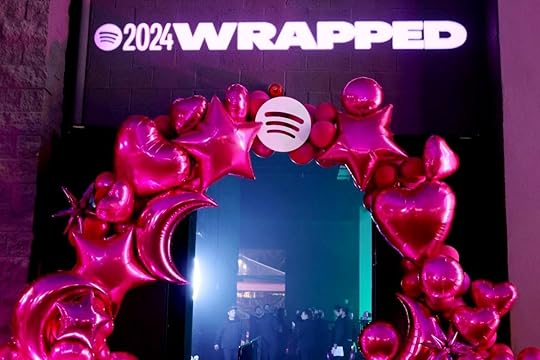 Photo Courtesy Spotify
Photo Courtesy SpotifyThe Scale: When advocates bring in exponential reach. It’s Spotify Wrapped, turning millions of users into eager advertisers every December. The initial investment: turning data into shareable, personalized music data stories. The return: an annual viral moment where hundreds of millions of people voluntarily (and excitedly) share their Spotify stats across social media, reaching billions of impressions and driving new subscriptions. And this is all through authentic user enthusiasm rather than paid advertising.
In other words, the real ROI question isn’t whether to invest in customer experiences; it’s where to start.
The action planStart with a single customer touchpoint. Choose a moment that already exists in your customer journey. Pick one interaction where you have both control and data. It might be the first training session, the conference welcome, or the moment someone walks into your store.Transform it from transaction to experience. Look at your touchpoints through the lens of emotion and impact, not just efficiency. A quarterly update isn’t just about numbers; it’s an opportunity to bring those numbers to life through video storytelling, interactive exploration, or immersive visualization of what’s really happening. Measure the multiplication. Track the immediate impact (satisfaction scores, engagement rates), but don’t stop there. Watch for the ripple effects: unprompted social shares, word-of-mouth referrals, changes in customer lifetime value.The beauty of this approach? It scales. Start with one touchpoint, perfect the formula, then expand. Every transaction holds the potential for exponential returns through meaningful, memorable customer experiences.
Jenna Isken is Global Group Director, Brand Experience at Siegel+Gale.
The post Experience pays: the new marketing math appeared first on Siegel+Gale.
February 19, 2025
How Lidl is redefining loyalty, one pint at a time
This article originally appeared in Raconteur.
Lidl customers in Northern Ireland, rejoice! You’ll soon be able to have a well-earned, rewarding beer for diligently doing your grocery shopping. After years of a legal tussle that included application rejections and complaints from local off-licence players, the discount supermarket chain was finally given the green light to open a pub in one of its stores.
Yes, Northern Ireland (let alone the UK) might not need a new pub and you may wonder how on earth the retailer was able to sway the court its way considering the tough-as-nails alcohol licensing laws in the country. Reasons against it were plenty. Convenience stores nearby cried their eyes out. But legal arguments aside, Lidl used the strength of its brand to reach an agreement with local bar owners to surrender their licence so it could take it on.
And some cash. Loads of it. In fact, the retailer committed to investing around £400,000 to fully outfit the joint to service its loyal customers. Taproom included.
What sparks curiosity is the moment that this is all happening. Why this, why now? In today’s day and age, any health-aficionado pundit could easily build a bullet-proof business case against the ROI of pubs. But when it comes to Lidl, it’s less about the product being sold than the experience it consistently provides its customers. And this case is simpler to make.
Kings of simplicityIn fact, Lidl secured the top spot in our 2023-2024 World’s Simplest Brands study. The retailer outperformed tech and consumer goods giants by deploying five simple strategies that make customers’ lives easier; among those, “an ability to harness the power of its customer base, recognising that its customers are not just consumers but potential brand advocates.”
Lidl is one of those brands whose proposition is so clear and compelling that it fosters a sense of loyalty and trust; therefore, the retailer is able to turn its satisfied customers into genuine ambassadors who promote the brand organically to friends and family. And this loyalty results in more revenues, feeding into a virtuous cycle where all parties walk away feeling they’ve made a good deal.
Look no further than Lidl’s staggering performance in December 2024, with its turnover surpassing £1 billion during the festive period. How? Well, according to a study by Kantar, this figure was fuelled by 35 million additional shopping trips made to Lidl stores by existing customers compared to the previous year. And those same customers put over 267 million more items in their baskets than the year before.
When it comes to loyalty, simplicity pays.
Not thrifty, niftyWe all know it. In one way or another, the retailer’s tagline creeps up in your mind and you find yourself thinking ‘Big on quality, Lidl on price’. It’s so simple and easy to understand that it became a war cry for the great-value-for-money-I’m-not-paying-for-unnecessary-stuff-budget-conscious customer. It became the measuring stick for optimised grocery shopping. But most importantly, the tagline was able to successfully shed light on value, without overutilising the word.
Because when it comes to shopping habits, people don’t like to be seen as stingy; they’d rather be labelled as discerning, especially in today’s economy. Lidl’s value for money is delivered through operation efficiency and a strong private label offering that rivals big-name brands at lower costs, creating in customers a sense of excitement for winning at the tills. And that feels good, doesn’t it?
Creating a cult followingIn the UK, a pub is traditionally a social hub: it serves as a gathering place for locals. It’s where you go to socialise during quiz nights. It’s where you watch football with your mates on a Saturday afternoon. It’s pretty damn much a cultural institution. Ironically, a German retailer had the vantage point to seize this opportunity: by integrating a pub into its store, Lidl is moving beyond just being a supermarket—it’s positioning its brand as a community destination, a place to unwind before or after grocery shopping, mingle, or just purely kill time.
As always, customers will decide if it’ll be a successful proposition. But at the very least it shows Lidl’s willingness to experiment with new formats. It proves that it understands local customs to create a more engaging shopping experience, while still retaining its authentic tone. It leverages the power of its brand––and how well its customers understand it––to shift the perception of supermarkets from purely transactional spaces to more experiential ones.
Think how this initiative could boost foot traffic, giving customers a reason to spend more, or more time, or more often. It strengthens an emotional bond with its community, which not only feeds into Lidl’s well-established loyalty but also attracts new customers; in 2024, the retailer recruited an additional 326,000 shoppers––more than any other supermarket in the UK.
That’s cult icon-esque. And that’s something that the local bar owners realised before surrendering their alcohol license to Lidl.
Setting new standardsLidl’s pub initiative is a bold move that goes beyond just selling products—it taps into community-building and innovation. It enhances its reputation as a forward-thinking brand, that knows who it is and what it stands for, but also what its customers expect from it: an effective shopping experience, truthful to local customs, high on quality, Lidl on price. In short, when customers expect simplicity, Lidl delivers.
So watch this space. It might just set a precedent for how supermarkets evolve to blend shopping with social engagement, one pint at a time.
Patrick Kampff is Senior Strategy Director at Siegel+Gale.
The post How Lidl is redefining loyalty, one pint at a time appeared first on Siegel+Gale.
February 11, 2025
Go big or go home: how brands showed up at Super Bowl LIX
With 30-second spots at this year’s game costing $8 million, the Super Bowl remains a potent platform for brands—from promoting new products to forging audience connections.
Whether it was extraterrestrial mascots or self-deprecating humor, our experts, Jenna Isken, Lisa Kane, and Amy Chen, weigh in on the ads from Super Bowl LIX.

When these ads debuted in 2022, they were arresting and generated real conversation and Google searches. Now, their consistency has become their biggest challenge. Viewers either appreciate the artistry or tune out when those moody visuals hit their screens. I question whether the emotional response they aim to evoke even connects back to their brand anymore. —Jenna Isken, Global Group Director, Experience
Adweek | ‘He Gets Us’ Brings a Heartfelt Ad to Super Bowl 2025
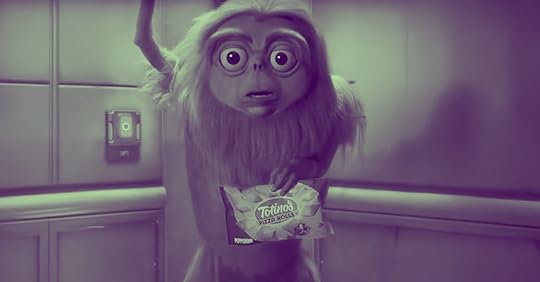
Tim Robinson and Sam Richardson are having a pop culture revival since Detroiters was re-released on Netflix last fall. For this fanbase, the two can do no wrong, and the Totino’s spot is a clearly in lock step with culture. For a lot of other people, it’s a miss. I’ve always found their brand of humor awkward and uncomfortable, and this spot is no exception. You won’t find me stocking up on Totino’s anytime soon—but I’m not their target demographic. Will this spot be a success for Totino’s? Probably. —Amy Chen, Director, Experience
Adweek | Can Two Comedians Compete with Totino’s Strange (and Dead) Alien Chazmo?

The worst Super Bowl commercials are the ones that try so hard to stand out that they feel completely inauthentic and leave us baffled. But this year’s DoorDash ad is perfectly on brand.
A celebrity promotes a feature or service (in this case, it’s comedian Nate Bargatze promoting DashPass) with the playful, absurd humor that we’ve come to expect. It’s fun and entertaining while promoting a simple, clear message. Is it going to leave a lasting imprint on pop culture? Probably not. But it will probably make you chuckle. And it may just make you consider signing up. —Lisa Kane, Group Director, Strategy
Adweek | DoorDash’s Super Bowl Ad Is ‘Beautifully-Executed,’ but Will It Break Through the Noise?
The post Go big or go home: how brands showed up at Super Bowl LIX appeared first on Siegel+Gale.
Alan M. Siegel's Blog
- Alan M. Siegel's profile
- 4 followers


